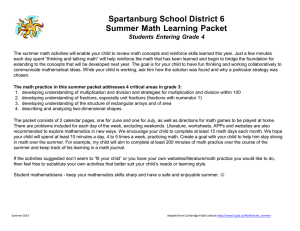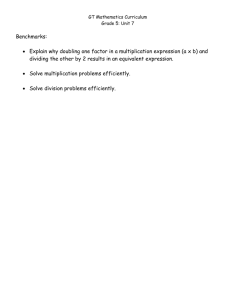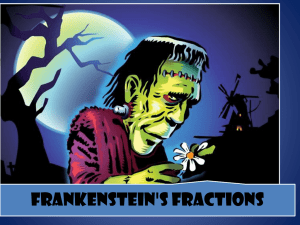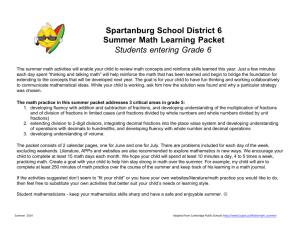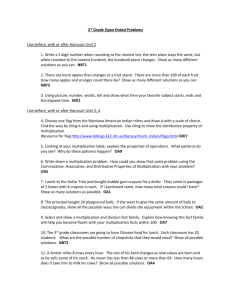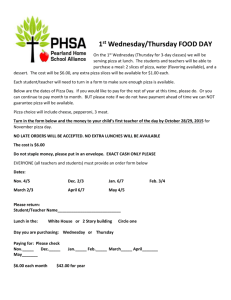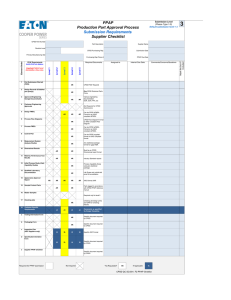Grade 5 summer math calendar 2014
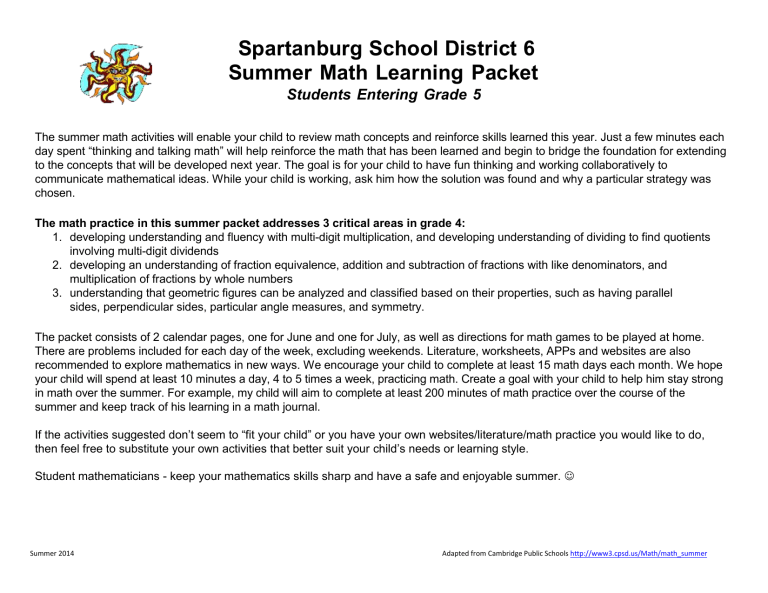
Spartanburg School District 6
Summer Math Learning Packet
Students Entering Grade 5
The summer math activities will enable your child to review math concepts and reinforce skills learned this year. Just a few minutes each day spent “thinking and talking math” will help reinforce the math that has been learned and begin to bridge the foundation for extending to the concepts that will be developed next year. The goal is for your child to have fun thinking and working collaboratively to communicate mathematical ideas. While your child is working, ask him how the solution was found and why a particular strategy was chosen.
The math practice in this summer packet addresses 3 critical areas in grade 4:
1. developing understanding and fluency with multi-digit multiplication, and developing understanding of dividing to find quotients involving multi-digit dividends
2. developing an understanding of fraction equivalence, addition and subtraction of fractions with like denominators, and multiplication of fractions by whole numbers
3. understanding that geometric figures can be analyzed and classified based on their properties, such as having parallel sides, perpendicular sides, particular angle measures, and symmetry.
The packet consists of 2 calendar pages, one for June and one for July, as well as directions for math games to be played at home.
There are problems included for each day of the week, excluding weekends. Literature, worksheets, APPs and websites are also recommended to explore mathematics in new ways. We encourage your child to complete at least 15 math days each month. We hope your child will spend at least 10 minutes a day, 4 to 5 times a week, practicing math. Create a goal with your child to help him stay strong in math over the summer. For example, my child will aim to complete at least 200 minutes of math practice over the course of the summer and keep track of his learning in a math journal.
If the activities suggested don’t seem to “fit your child” or you have your own websites/literature/math practice you would like to do, then feel free to substitute your own activities that better suit your child’s needs or learning style.
Student mathematicians - keep your mathematics skills sharp and have a safe and enjoyable summer.
Summer 2014 Adapted from Cambridge Public Schools http://www3.cpsd.us/Math/math_summer
Grade 5 Students
Summer Math Ideas
Math Tools You Will Need:
Notebook for math journal
Pencil
Crayons
Regular deck of playing cards
Games To Play: (You will need a regular deck of cards)
1. Multiplication Compare
Coins
Dice
Remove all the face cards from a deck of cards. The ace will equal 1. Deal out the cards equally between 2 to 3 players. Each player turns over 4 cards and multiplies a 2-digit number by a two-digit number.
Use the symbols <, >, or = to compare the products. The person with the highest
DIRECTIONS: product wins all the cards.
Do your best to complete as many of these summer math activities as you can!
2. Close to 1000
Record your work in your math journal every day. In August, share your Math
Deal 8 cards to each player. Use any 6 cards to make two 3-digit numbers. Try to
Journal with your fifth grade teacher. make the sum close to or exactly 1000. For example, you combine 148 and 853 to
Each journal entry should :
Have the date of the entry
Have a clear and complete answer
Be neat and organized make 1001. Your score is 1 because the difference between 1001 and 1000 is 1.
The lowest score after five rounds wins!
Other games to play : Monopoly, Othello, Battleship, Connect Four, Mastermind,
Mancala, Legos, KʼNex, Simon, Yahtzee
Here is an example of a
“Great” journal entry:
June 7, 2014
Today I looked at the weather section of the newspaper and recorded the predicted high temperature for the next 5 days: 82,
88, 90, 76, 81. I rearranged the data from the least to greatest number, then found 82 to be the middle value, which is the median temperature.
Math Books to Read:
Counting on Frank
A Grain of Rice
Sideways Arithmetic from Wayside School
Divide and Ride
by Helena Clare Pittman
by Stuart Murphy
Lemonade for Sale
Websites:
by Rod Clement
by Stuart Murphy http://www.funbrain.com/ http://bedtimemath.org
http://www.coolmath.com./
by Louis Sachar http://illuminations.nctm.org/Games-Puzzles.aspx
http://www.aplusmath.com/ http://pbskids.org/cyberchase/math-games/ http://www.gregtangmath.com/ http://www.coolmath4kids.com/ http://resources.oswego.org/games/mathmagician/cathymath.html
http://xtramath.org/
http://www.playkidsgames.com./
http://www.figurethis.org./index.html
Worksheets to Practice Math http://www.gregtangmath.com/materials http://www.commoncoresheets.com/
APPs:
Grades 3-5
Everyday Mathematics, Addition Top It
Everyday Mathematics, Beat the Computer,
Multiplication
Everyday Mathematics, Divisibility Dash
Everyday Mathematics, Equivalent Fractions
Pizza Fractions 1
My Times Tables
Tony’s Fraction’s Pizza Shop
Pearl Diver
Lobster Diver
Factor Samurai
Fraction App by tap to Learn
Dare to Share Fairly
Long Division Touch
Math Ninja HD
Quick Math
Wuzzit Trouble
Sushi Monster
Deep Sea Duel
All Grades
KENKEN
Kakooma
Quick Math
– Arithmetic
& Times Tables
Pick-a-Path
Sumdog
Conundra Math
Thinking Blocks
Fast Facts Addition,
Subtraction
Fast Facts Multiplication,
Division
Summer 2014 Adapted from Cambridge Public Schools http://www3.cpsd.us/Math/math_summer
Sunday
1 2
Play the game
Close to 1000.
(see directions)
8
June 2014 Entering Fifth Grade Mathematics Calendar
Monday Tuesday Wednesday Thursday Friday
9
Solve the riddle: I have 5 in the tenths place. I have 7 in the thousandths place. I have 4 in the ones place. I have 2 in the hundredths place. What decimal am I?
Write your own riddle.
3
Write three facts about the number 28. Is this number prime or composite? How do you know? Round this number to the nearest 10.
10
Go to http://www.gregtangmath.com/
Choose some worksheets to complete.
4
A lawn water sprinkler rotates
65 degrees and pauses. It then rotates 25 more degrees in the same direction. What is the total degree rotation of the sprinkler?
To cover a full 360 degrees, how many more degrees will it move?
11
With a partner take turns scooping coins from a cup.
Write the total in dollars and cents using decimal notation.
Compare totals using <, >, or =.
Take ten turns.
5
Read A Grain of Rice by Helena
Pittman.
Calculate how many grains of rice she will receive on day 18.
How many will she have altogether?
12
Skip count by 5ʼs starting at 1.
What patterns do you notice?
Explain why you think these patterns are happening.
6
Visit the website www.multiplication.com
Choose some activities to have fun practicing multiplication. Record choices.
13
Play the Product Game at www.
illuminations.nctm.org
Record the strategy that you used.
15
Saturday
7
14
22
29
16
Identify, record and classify angles: acute (less than
90°) obtuse (greater than 90°), right (90°) in everyday things
(buildings, bridges, furniture…)
17
Write down the names and prices of 5 cars you find in the newspaper. Order the prices from least to greatest. Round the prices to the nearest thousand.
18
15 friends want to order pizza for dinner. They predict that each person will eat 1/3 of a pizza. How many pizzas should they order? What if there were 9 friends and they each ate 1/3 of a pizza ?
19
Visit the website www.setgame.com
Play and enter to win a prize!
23
Play Multiplication
Compare.
(see directions)
24
Play a strategy game. What strategy did you use? Would you use it again?
25
Make a paper airplane and fly it. Measure how far it goes.
Try a few times. Record distances in your journal. Is it more accurate to use kilometers, meters or centimeters to measure?
26
Play Baseball at www.funbrain.com
Challenge yourself.
30
Write down the numbers you see on 2 license plates.
Create 4 math problems with these numbers using all 4 operations (+, -, x, ÷).
20
The sum of two mixed numbers is 5. What might the two mixed numbers be?
Show as many different solutions as you can. Explain your strategy.
21
27
Find the area of your bedroom floor. What room in your house could have about twice the area of your bedroom or about half the area of your room? Check.
28
Summer 2014 Adapted from Cambridge Public Schools http://www3.cpsd.us/Math/math_summer
Sunday
6
13
20
27
July 2014 Entering Fifth Grade Mathematics Calendar
Monday Tuesday Wednesday Thursday
1
Tom and Ben ordered a pizza for lunch. They each ate 1/3 of the pizza. How much pizza was eaten? How much pizza was left?
2
Draw a design using symmetry.
What makes your design symmetrical?
3
Visit the website www.mathplayground.com
Play the logic games.
How did you do?
4
Holiday
Friday Saturday
5
7
Measure 10 objects to the nearest ¼, ½, or1/8 inch. Put the data on a line plot. How many objects measured 1⁄4 inch? 1⁄2 inch? Add the objects together end to end.
What is the total length?
8
The difference between two mixed numbers is 31⁄4. What might the two mixed numbers be? Show as many different solutions as you can. Explain your strategy.
9
Play Close to 1000 .
(see directions)
10
Play Concentration at www.
illuminations.nctm.org
Choose: fractions, face down.
Draw pictures that represent some fractions.
11
Vowels are worth $50 each, consonants are worth $40.
Can you make a word worth exactly $200? $600?
12
14
I earn $5 per hour babysitting and $4 per hour for weeding the garden. Last week I did 7 hours babysitting and 6 hours weeding. How much more money do I need to buy a game that costs $80.00?
21
List some capital letters (H,
F…) that have one pair of parallel lines. Are there any that have two pair of parallel lines or three?
15
Play Fraction Game at www.illuminations.nctm.org
How many moves did it take to get all the red markers to the right side? Can you beat your score?
22
Make the largest and smallest numbers you can find using the digits 4, 1, 7, 8, and 2.
Find their difference and sum.
16
Measure the perimeter of two different sized windows in your home. Find the difference of the perimeters.
17
A cake recipe calls for you to use 3⁄4 cup of milk, 1⁄4 cup of oil, and 2/4 cup of water. How much liquid was needed to make the cake? Is this more or less than a pint? How do you know?
18
Write a word problem whose answer is 154. Have someone solve the problem.
19
23
Try a new activity at www.coolmath4kids.com
Challenge yourself. What did you choose to do?
24
What factors can you use in this equation, x 5 = , to make a product that is an odd number between 30 and 60?
Show all possible solutions.
Explain your strategy.
25
Use 5 playing cards to make the largest 5-digit number possible. Represent the number in numeral, word and expanded forms. Repeat with 5 more cards.
26
28
Visit the game room at www.aplusmath.com
Record what you played.
29
Have a scavenger hunt for real-world examples of parallel lines (ex. railroad tracks).
30
Play a game. What strategy did you use? Would you use that strategy again?
.
31
A regular pentagon measures
2 1⁄8 cm on one side. What is the perimeter of the pentagon?
YOU DID IT! Please bring your journal to your fifth grade teacher on the first day of school!
Summer 2014 Adapted from Cambridge Public Schools http://www3.cpsd.us/Math/math_summer
Grade 5 Answer Key
Answers will vary for many of the activities depending on the choices students make. Here are the answers for activities with specific solutions.
June 3
28 is a composite number. Possible answers for three facts: an even number; a perfect number as the sum of its proper factors (besides 28) equal to 28; the ones digit is 4 times the tens digit. When rounded to the nearest ten, it is 30.
A prime number is a whole number greater than zero that has exactly two different factors, one and itself.
For example, 5 is a prime number because its only two factors are 1 and 5. A composite number is a whole number greater than zero that has more than two different factors. For example, 8 is a composite number because its factors are 1, 2, 4, and 8.
1 is neither prime nor composite. It is not prime because it does not have exactly two factors. It is not composite because it does not have more than 2 factors. 1 is a special number.
June 4
The sprinkler rotated 90 degrees. The sprinkler needs to rotate 270 degrees to cover the full 360 degrees.
June 9
4.527
June 11
Examples:
$0.58 > $0.26
$1.13 < $1.24
June 12
6, 11, 16,
21…
The pattern is an even number followed by an odd number. This pattern is happening because an even plus an odd number is odd (6 + 5 = 11), and an odd plus an odd is an even number (11 + 5 = 16).
June 18
5 pizzas for 15 friends 15 x 1/3 = 5
3 pizzas for 9 friends 9 x 1/3 = 3
June 20
Examples:
2 1/2 + 2 1/2 = 5
1 3/4 + 3 1/4 = 5
1 1/4 + 3 3/4 = 5
July 1
1/3 + 1/3 = 2/3 of the pizza was eaten
1/3 of the pizza was left
July 2
A design is symmetrical if a line can be drawn such that the design can be folded along the line into matching parts.
July 7
Example:
Summer 2014
Adapted from Cambridge Public Schools http://www3.cpsd.us/Math/math_summer
July 8
Examples:
5 ¾ - 2 2/4 = 3 ¼
9
¾ - 6 2/4 = 3 ¼
4 2/4
– 1¼ = 3 ¼
July 14
7 hours of babysitting times 5 dollars per hour 7 x 5 = 35 dollars
6 hours of weeding times 4 dollars per hour 6 x 4 = 24 dollars
$24 + $35 = $59
$80 - $59 = $21
You need $21 more dollars to buy the game.
July 17
3/4 + ¼ + 2/4 = 6/4 = 1 2/4 or 1½
1 2/4 cups of liquid
This is less than a pint because there are 2 cups in a pint.
July 21
E, F, H, I, M, N, Z
E has 3 parallel lines
July 22
The largest number is 87,421. The smallest is 12,478
Their sum is 99,899. Their difference is 74,943.
July 24
7 x 5 = 35
9 x 5 = 45
11 x 5 = 55
July 25
Example:
Numeral: 86,532
Word Form: eighty six thousand five hundred thirty- two
Expanded Form: 86,532 = 80,000 + 6,000 + 500+30+2
July 31
A pentagon has 5 sides. 2 1/8 x 5
= 10 5/8 cm
Summer 2014
Adapted from Cambridge Public Schools http://www3.cpsd.us/Math/math_summer
